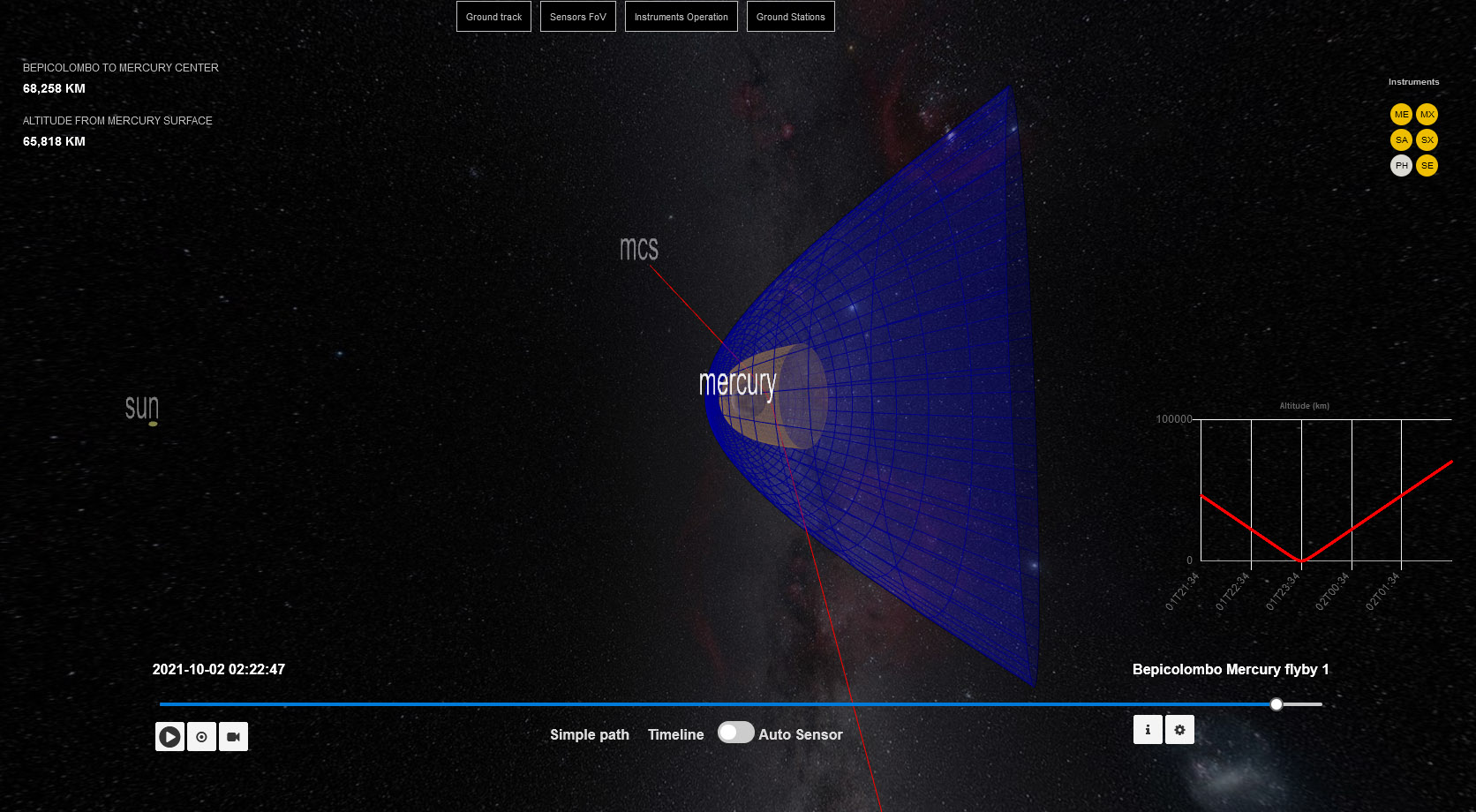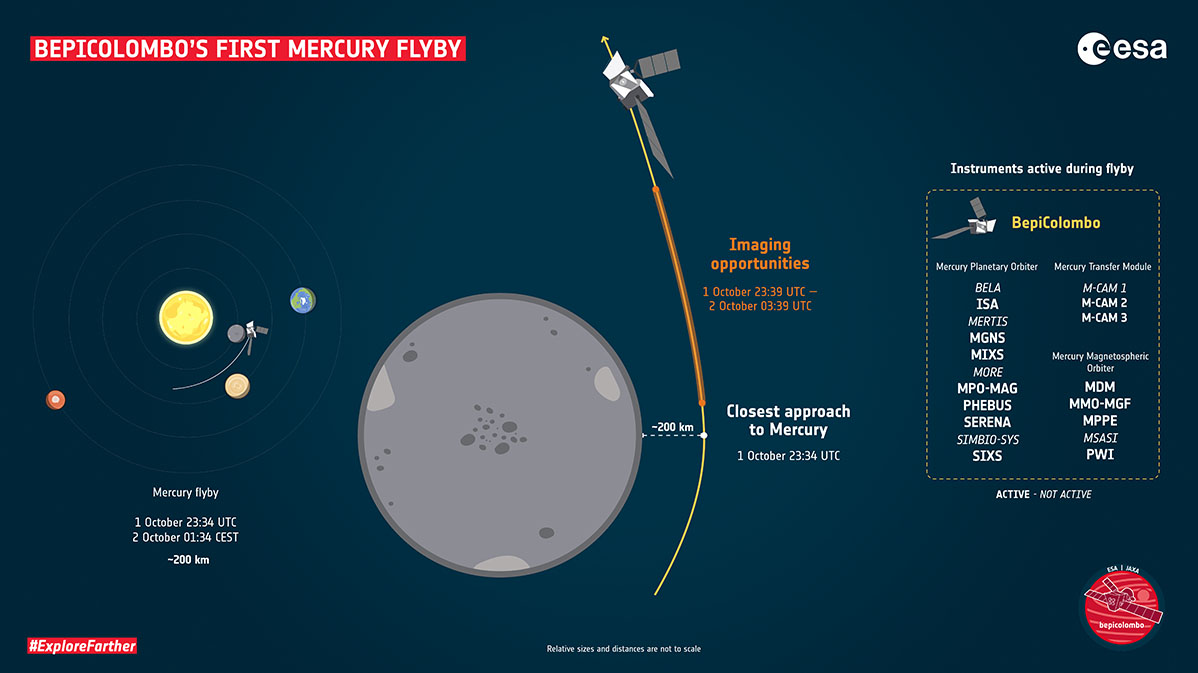

Only 3 weeks after the second Venus flyby, it is already time to approach for the first time Mercury, the goal of the BepiColombo mission.
The approaching trajectory will start from the nightside and have its closest approach (CA) at 23:34 UTC, when still on the night side of the planet, at an estimated altitude of 198 km above the surface. In particular, bow shock and magnetopause will be crossed with an estimated entrance crossing time from 22:30 to 00:00 UTC (see simulation as derived on the ESAC tool, image below). The whole crossing will be very fast, lasting about one and half hour.

The core of the flyby operations will be concentrated in the 4 hours around the CA (i.e. from 21:34 UTC to 2.:34 UTC of October 2nd), with no solar array movements or wheel offloading from 21:59 to CA+1h. Also antennae will be on hold from CA-1h to CA+1h, to minimize disturbances to the most sensitive instrumentation onboard.
The SERENA/MIPA and /PICAM sensors will begin the operation in the morning of the 1st October to try to detect populations in the tail of Mercury, as well as the real crossings of the different magnetic boundaries.
In particular, starting from CA-16h, they should both detect solar wind up to about CA-2h. After CA, instead, they will be operating up to CA+7h50m, to be again able to monitor the upstream regions of the magnetosphere, the time of the exit, and again the solar wind.
The ESA infographic below shows the list of instruments that will be operating during the flyby.
More info on the geometry can be found here:
https://www.cosmos.esa.int/web/bepicolombo-flyby/mercury-flyby-s-overview
